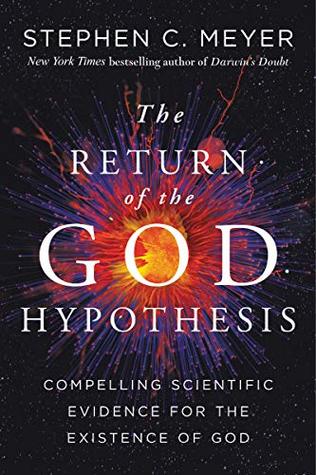More on this book
Community
Kindle Notes & Highlights
Read between
August 16, 2024 - January 10, 2025
Scientific materialists have traditionally answered that question by affirming that matter, energy, and/or the laws of physics are the entities from which everything else came and that those entities have existed from eternity past as the uncreated foundation of all that exists. Matter, energy, and physical laws are, therefore, viewed by materialists as self-existent.
Moreover, since nature had been designed by the same rational mind who had designed the human mind, the early modern scientists (or, again, “natural philosophers”)54 who began to investigate nature also assumed that nature was intelligible. It could be understood by the human intellect. The founders of modern science assumed that if they studied nature carefully, it would reveal its secrets. Their confidence in this assumption was grounded in both the Greek and the Judeo-Christian idea that the universe is an orderly system—a cosmos, not a chaos.
Another biblical idea influenced the development of an observational and experimental approach. Even as scientists during the sixteenth and seventeenth centuries saw human reason as a gift of a rational God, these same scientists, many influenced by the Protestant Reformation and ideas from the church fathers recovered during the late Middle Ages, also recognized the fallibility of humans and, therefore, the fallibility of human ideas about nature.
“How came the Bodies of Animals to be contrived with so much Art, and for what ends were their several Parts? Was the Eye contrived without Skill in Opticks, and the Ear without Knowledge of Sounds? . . . And these things being rightly dispatch’d, does it not appear from Phænomena that there is a Being incorporeal, living, intelligent, omnipresent?”84
Intellectual historians and historians of science typically identify the shift away from the theistic foundations of modern science with three major developments in Western intellectual history: first, the Enlightenment idea that human reason could replace and function autonomously from religious belief;1 second, the increasing skepticism about the existence of God, or at least about the soundness of arguments for God’s existence, among many Enlightenment philosophers; and third, the rise of scientific materialism and with it both new norms of scientific practice and a worldview allegedly
...more
Consequently, Vilenkin argues that evidence for a beginning is now almost unavoidable. As he explains, “With the proof now in place, cosmologists can no longer hide behind the possibility of a past-eternal universe. There is no escape; they have to face the problem of a cosmic beginning.”
The fine tuning of these properties has puzzled physicists not only because of their extreme improbability, but also because there doesn’t seem to be any necessary physical or logical reason why they have to be as they are. Philosophers of science call such fine-tuning features “contingent” properties, since they could conceivably have been different without violating either the fundamental laws of physics or any necessary principle of logic or mathematics.
Over the years, as Hoyle thought more about the discovery of the exact resonance level of carbon that he had predicted, and especially about all the factors that had to be just right to make carbon relatively easy to produce inside stars, he became convinced that some intelligence had orchestrated the precise balance of forces and factors in nature to make the universe life-permitting.
Many have also noted that this fine tuning strongly suggests design by a preexistent intelligence. As the British physicist Paul Davies put it in 1988, “The impression of design is overwhelming.”31 Similarly, astrophysicist Luke Barnes notes: “Fine tuning suggests that, at the deepest level that physics has reached, the Universe is well put-together. . . . The whole system seems well thought out, something that someone planned and created.”
Although the Cambrian explosion of animals is especially striking, it is far from the only “explosion” of new living forms. The first winged insects, birds, flowering plants, mammals, and many other groups also appear abruptly in the fossil record, with no apparent connection to putative ancestors in the lower, older layers of fossil-bearing sedimentary rock. Evolutionary theorist Eugene Koonin describes this as a “biological big bang” pattern. As he notes, “Major transitions in biological evolution show the same pattern of sudden emergence of diverse forms at a new level of complexity. The
...more
The classic nursery rhyme speaks of a broken Humpty, whom not even “all the king’s horses and all the king’s men” can reassemble into a properly organized egg. Similarly, Tompa and Rose have demonstrated mathematically that even having all the requisite parts for a cell will not ensure that those ingredients will self-organize into a living system.
theism provides a better overall explanation than deism of the three key facts about biological and cosmological origins under examination: (1) the material universe had a beginning; (2) the material universe has been finely tuned for life from the beginning; and (3) large discontinuous increases in functionally specified information have entered the biosphere since the beginning. Deism can explain the first two of those facts; theism can explain all three.


